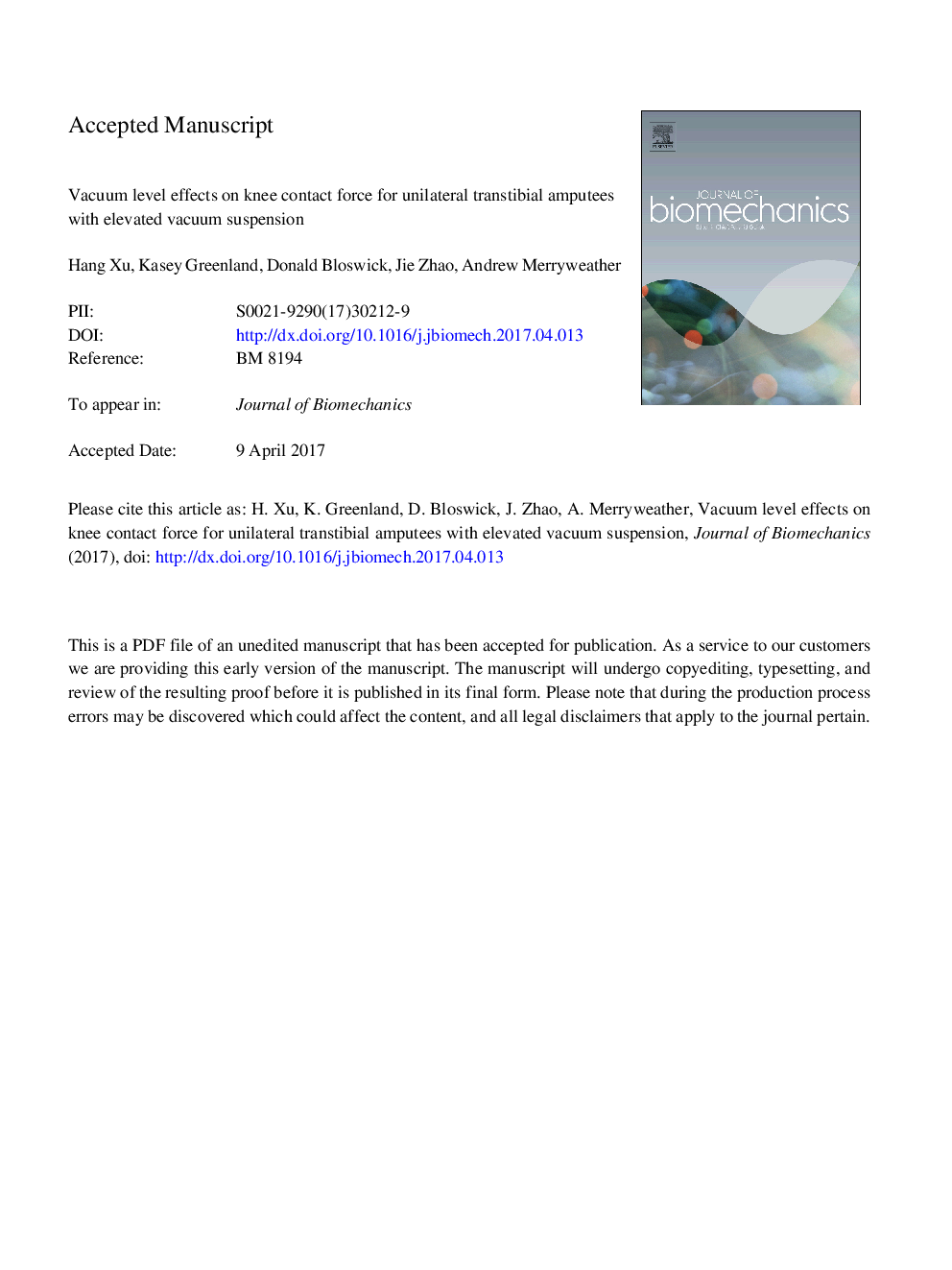| Article ID | Journal | Published Year | Pages | File Type |
|---|---|---|---|---|
| 5032001 | Journal of Biomechanics | 2017 | 28 Pages |
Abstract
The elevated vacuum suspension system (EVSS) has demonstrated unique health benefits for amputees, but the effect of vacuum pressure values on knee contact force (KCF) is still unclear. The objective of this study was to investigate the effect of vacuum levels on KCF for unilateral transtibial amputees (UTA) using the EVSS. Three-dimensional gait was modeled for 9 UTA with five vacuum levels (0-20Â inHg [67.73Â kPa], 5Â inHg [16.93Â kPa] increments) and 9 non-amputees based on kinematic and ground reaction force data. The results showed that the vacuum level effects were significant for peak axial KCF, which had a relatively large value at 0 and 20Â inHg (67.73Â kPa). The intact limb exhibited a comparable peak axial KCF to the non-amputees at 15Â inHg (50.79Â kPa). At moderate vacuum levels (5Â inHg [16.93Â kPa] to 15Â inHg [50.79Â kPa]), co-contraction of quadriceps and hamstrings at peak axial KCF was similar for the intact limb, but was smaller for the residual limb comparing with the non-amputees. The intact limb showed a similar magnitude of quadriceps and hamstrings force at 15Â inHg (50.79Â kPa) to the non-amputees, but the muscle coordination patterns varied between the residual and intact limbs. These findings indicate that a proper vacuum level may partially compensate for the lack of ankle plantarflexor and reduce the knee loading. Of the tested vacuum levels, 15Â inHg (50.79Â kPa) appears most favorable, although additional analyses with more amputees are suggested to confirm these results prior to establishing clinical guidelines.
Related Topics
Physical Sciences and Engineering
Engineering
Biomedical Engineering
Authors
Hang Xu, Kasey Greenland, Donald Bloswick, Jie Zhao, Andrew Merryweather,
